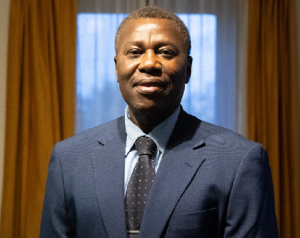A well-diversified portfolio has overtime been proven to be the most effective way to manage one’s risk and take advantage of opportunities that are presented in our market today.
You have probably heard the expression “Don’t put all your eggs in one basket”. The first thought that comes to mind when you ask about eggs in one basket is obvious -risk! When one diversifies, one is spreading the sum of the investments in different baskets or asset classes to reduce the overall risk.
Diversification is “a risk management strategy that mixes a wide variety of Investments within a portfolio” (Investopedia). The justification is to create a portfolio of different kinds of assets that will averagely yield long term returns and lower overall risk for the investor.
Diversification is a way of protecting one’s investments against extreme changes in value if done correctly. As opined by Warren Buffet “Diversification is protection against ignorance. It makes little sense if you know what you are doing”.
Is Investing through different fund managers diversification?
Fund managers are professionals responsible for implementing a fund’s investment strategy and managing its portfolio trading activities. Their mandate is limited to an agreement between the beneficiaries or representatives of the beneficiaries of the fund and themselves. This includes the choice of the permitted asset classes and or strategies to be used by the Fund Manager. Every investment fund – unit trust or mutual fund – has a specified mandate indicating the allowable or specified asset classes and or strategy.
Investors typically would consider investing with different Fund Managers as a way of diversification. However, if the preferred Fund Managers use similar strategies or have mandates in the same asset class, diversification has not been fully achieved. Different managers have been selected and one would have the benefit of reducing or lowering the administrative risk, but the investment remains undiversified as both managers are investing in the same asset class.
A decline in that asset class would impact the investment under both managers although they are managed separately by different managers. This is because both managers invest in similar securities which are within the same asset class.
For example, if manager A has a mandate for equities and manager B also has a mandate for equities and the stock market overall performance is low, both managers are likely to show low performance with little variation. Hence although an investor may have chosen two different managers, under this circumstance, the investment risk was not diversified and will experience low performance on both investments. This means that diversification goes beyond having two different managers.
Here is another example;, an investor may opt for a fund that invests in money market securities in institution A and also invest in institution B’s money market collective investment. Both funds have the same underlying investment and are thus exposed to the same risk.
A well-diversified portfolio is one that puts together not just stocks and bonds but cash or cash equivalents as well. This is so because the different asset classes respond differently to market conditions like increasing interest rates or inflation and exchange rate fluctuations.
Your understanding of diversification is what truly makes the difference.
How well have you diversified?
According to Warren Buffet wide diversification is only required when investors do not understand what they are doing.
Diversification could go beyond just selecting a few asset classes and combining them in order to increase one’s average return and reduce risk. Diversification may not only be across asset classes but also within asset classes or not only within institutions but also across institutions. This could mean investing in stocks across multiple sectors or bonds across different issuers. Diversification could get deeper and more complicated and it could get wider and more confusing. However, with reference to Warren’s, quote wide or deep diversification will be required when investors do not understand how their investment needs can be met.
So where are your eggs? Is it in one basket or different baskets? If it’s one basket, which basket is it and are you watching that basket carefully? If it’s in different baskets which baskets are those? These decisions could be tough if you are making them with little or no guidance. No matter how small you may think your assets are, it is your “egg” and it is valuable because it is a seed that could give you a better future. Invest wisely, speak to an expert who understands the market and has relevant information on issuers and investment options.
Let’s keep our eggs safe not just in different baskets!
Opinions of Tuesday, 20 August 2019
Columnist: Miriam Maku Amissah















